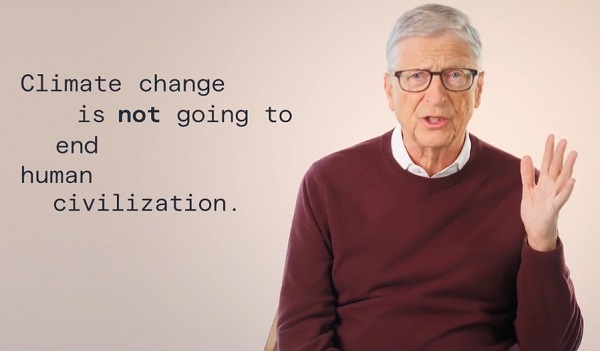Great Reset
Terrorists Welcome: Chronic counterterrorism lapses at the border demand investigation

Published April 22, 2024 by the Claremont Institute’s The American Mind
Author: Todd Bensman
The latest release into the American interior of an FBI terrorist suspect who illegally crossed the U.S.-Mexico border—a twice-freed Afghan national man free to roam America for 11 months until his capture—demands that the federal government regard this patterned problem as a chronic national security emergency requiring elevation to the highest priority within the intelligence community, federal law enforcement, and Congress.
|
|
The case of the 48-year-old Mohammad Kharwin, whom an overwhelmed Border Patrol freed into America on March 10, 2023 before agents could confirm the FBI watch list hit that initially flagged him and whom a swamped Texas immigration court freed a second time in February, is the seventh example of its kind that can establish, just from disparate public records, a mortally dangerous failure pattern.
More cases of accidental Border Patrol releases of illegally crossing terrorism suspects, who did not reach the public record, are highly likely if not certain.
But this latest miss-and-release propels the problem well beyond the critical mass threshold justifying coordinated high-priority government intervention, even if Congress must politically force it, before the next one—or those still roaming the country lost to authorities even now—needlessly kill and maim Americans.
By current public accounts, an initial Border Patrol database check flagged Kharwin for membership in Hezb-e-Islami, which the U.S. Director of National Intelligence describes as a “virulently anti-Western insurgent group,” when he illegally crossed the California border in March 2023. He was among 23,286 illegal aliens caught crossing that month in what would turn out to be a record-breaking year for the agency’s San Diego Border Sector. All told, there were 230,941 illegal crossers caught in 2023, up nearly 60,000 from 2022 and 90,000 more than 2021.
That extraordinary traffic no doubt strained all normal Border Patrol counterterrorism and vetting processes.
Instead of keeping Kharwin detained as a “special interest alien,” tagged until standard face-to-face interviews and corroboration of the initial hit was complete, Border Patrol agents under orders from Washington, D.C. waved him through like millions of other illegal crossers on “Alternatives to Detention” (ATD) personal recognizance papers, where they agree to voluntarily report later to ICE in a city of their choice.
NBC reports that Border Patrol never even informed ICE of the initial FBI watch list flagging; that’s evidently how the same collapsed border management system missed a second opportunity to catch Kharwin in late January of this year, when he showed up before an immigration judge in a Pearsall, Texas, ICE detention facility for a hearing. Perhaps because ICE still didn’t have the initial terrorism flag hit, that agency’s court lawyer representative did not report it to the judge, or appeal, when Kharwin was ordered released on $12,000 bond for a distant 2025 hearing.
“The judge placed no restrictions on his movements inside the U.S.” in the meantime, NBC reported.
Somehow, the FBI figured all of this out and got word to ICE agents to find and arrest Kharwin, which they did a month later, on February 28, in nearby San Antonio.
An Established New National Security Threat Pattern
Terrorism threat border lights have been blinking red for some time now in a non-specific way, especially since the U.S. Customs and Border Protection agency in March 2022 began publishing “Terrorist Screening Data Set Encounters” by the month on its public-facing website. Those began breaking all national records when the Biden government took office in January 2021, when apprehended illegal border crossers on the FBI watch list ballooned from three during Trump’s last fiscal year in office to 15, then by another 98 in fiscal 2022, then 169 in fiscal 2023, and another 75 so far in fiscal 2024.
Through March 2024, Border Patrol caught 342 while partnered federal agencies like the FBI and ICE intelligence presumably investigated and dealt with each. That they did so is less a good national security story than an unacceptable sampling of much bigger flows of watch-listed illegal aliens coming into America who are not caught and handled. If some two million of these so-called “got-aways” went through since 2021 (like Kharwin evidently tried to), more suspected terrorists on the FBI watch list are almost certainly among them.
But short of vastly reducing the millions-per-year border crossings by restoring former president Donald Trump’s discarded policies, the Biden Administration could at least be forced to triple down on its counterterrorism resources at the southern border.
In recent months, the terrorism threat at the border has generated some public concern, but never explicitly about the preventable accidental releases of terrorist suspects authorities later had to chase down.
In September 2023, for instance, I testified before the U.S. House Subcommittee on the Judiciary about the accidental releases I knew about at the time. Mine was indeed a rare warning that named the accidental-release problem in juxtaposition with my 2021 book America’s Covert Border War, which revealed counterterrorism programs at the border that have kept the nation safe from infiltrated attacks for nearly 20 years. I told the members that Biden’s border crisis had severely compromised those old programs, caused a spate of accidental terror suspect releases, and elevated the threat of terror attack as a result.
The Biden Administration’s own 2024 Homeland Threat Assessment warns, with far less specificity, that “terrorists may exploit the elevated flow and increasingly complex security environment to enter the United States” and that “individuals with potential terrorism connections continue to attempt to enter the Homeland illegally between ports of entry…via the southern border.”
With even less specificity, in his latest testimony to Congress about what he regards as a rising terrorist border infiltration threat, FBI Director Christopher Wray told the Senate Select Committee on Intelligence that a “wide array of very dangerous threats…emanate from” the southwest border, including the designated terror group ISIS.
Despite the variably specific warnings about the border infiltration threat, the ever-growing number of known accidental-release cases like Kharwin’s and the ones I told the subcommittee about remain broadly unrecognized as the unique emerging threat problem these cases indicate. Probably because no one has been killed yet as a consequence, few federal agencies or homeland security committee lawmakers seem interested in calling it out.
Case Candidates for Investigation
To date, only one federal investigation has produced a public report branding the problem, remarkable but forgotten or given short shrift by major U.S. news media, although I did write about it. That eye-opening document was the Department of Homeland Security’s inspector general’s office report about the April 19, 2022 crossing and mistaken release of a Colombian on the FBI watch list. ICE agents were not able to track him down to Florida for two long weeks.
Its key finding was that Border Patrol and ICE agents couldn’t do normal counterterrorism protocols because they were simply too “busy processing an increased flow of migrants.”
But these six other cases qualify as investigation-worthy:
| Read the rest here |
Censorship Industrial Complex
How the UK and Canada Are Leading the West’s Descent into Digital Authoritarianism

“Big Brother is watching you.” These chilling words from George Orwell’s dystopian masterpiece, 1984, no longer read as fiction but are becoming a bleak reality in the UK and Canada—where digital dystopian measures are unravelling the fabric of freedom in two of the West’s oldest democracies.
Under the guise of safety and innovation, the UK and Canada are deploying invasive tools that undermine privacy, stifle free expression, and foster a culture of self-censorship. Both nations are exporting their digital control frameworks through the Five Eyes alliance, a covert intelligence-sharing network uniting the UK, Canada, US, Australia, and New Zealand, established during the Cold War. Simultaneously, their alignment with the United Nations’ Agenda 2030, particularly Sustainable Development Goal (SDG) 16.9—which mandates universal legal identity by 2030—supports a global policy for digital IDs, such as the UK’s proposed Brit Card and Canada’s Digital Identity Program, which funnel personal data into centralized systems under the pretext of “efficiency and inclusion.” By championing expansive digital regulations, such as the UK’s Online Safety Act and Canada’s pending Bill C-8, which prioritize state-defined “safety” over individual liberties, both nations are not just embracing digital authoritarianism—they’re accelerating the West’s descent into it.
The UK’s digital dragnet
The United Kingdom has long positioned itself as a global leader in surveillance. The British spy agency, Government Communications Headquarters (GCHQ), runs the formerly-secret mass surveillance programme, code-named Tempora, operational since 2011, which intercepts and stores vast amounts of global internet and phone traffic by tapping into transatlantic fibre-optic cables. Knowledge of its existence only came about in 2013, thanks to the bombshell documents leaked by the former National Security Agency (NSA) intelligence contractor and whistleblower, Edward Snowden. “It’s not just a US problem. The UK has a huge dog in this fight,” Snowden told the Guardian in a June 2013 report. “They [GCHQ] are worse than the US.”
Following that, is the Investigatory Powers Act (IPA) 2016, also dubbed the “Snooper’s Charter,” which mandates that internet service providers store users’ browsing histories, emails, texts, and phone calls for up to a year. Government agencies, including police and intelligence services (like MI5, MI6, and GCHQ) can access this data without a warrant in many cases, enabling bulk collection of communications metadata. This has been criticized for enabling mass surveillance on a scale that invades everyday privacy.
Recent expansions under the Online Safety Act (OSA) further empower authorities to demand backdoors in encrypted apps like WhatsApp, potentially scanning private messages for vaguely defined “harmful” content—a move critics like Big Brother Watch, a privacy advocacy group, decry as a gateway to mass surveillance. The OSA, which received Royal Assent on October 26, 2023, represents a sprawling piece of legislation by the UK government to regulate online content and “protect” users, particularly children, from “illegal and harmful material.” Implemented in phases by Ofcom, the UK’s communications watchdog, it imposes duties on a vast array of internet services, including social media, search engines, messaging apps, gaming platforms, and sites with user-generated content forcing compliance through risk assessments and hefty fines. By July 2025, the OSA was considered “fully in force” for most major provisions. This sweeping regime, aligned with global surveillance trends via Agenda 2030’s push for digital control, threatens to entrench a state-sanctioned digital dragnet, prioritizing “safety” over fundamental freedoms.
Elon Musk’s platform X has warned that the act risks “seriously infringing” on free speech, with the threat of fines up to £18 million or 10% of global annual turnover for non-compliance, encouraging platforms to censor legitimate content to avoid punishment. Musk took to X to express his personal view on the act’s true purpose: “suppression of the people.”

In late September, Imgur (an image-hosting platform popular for memes and shared media) made the decision to block UK users rather than comply with the OSA’s stringent regulations. This underscores the chilling effect such laws can have on digital freedom.
The act’s stated purpose is to make the UK “the safest place in the world to be online.” However, critics argue it’s a brazen power grab by the UK government to increase censorship and surveillance, all the while masquerading as a noble crusade to “protect” users.
Another pivotal development is the Data (Use and Access) Act 2025 (DUAA), which received Royal Assent in June. This wide-ranging legislation streamlines data protection rules to boost economic growth and public services but at the cost of privacy safeguards. It allows broader data sharing among government agencies and private entities, including for AI-driven analytics. For instance, it enables “smart data schemes” where personal information from banking, energy, and telecom sectors can be accessed more easily, seemingly for consumer benefits like personalized services—but raising fears of unchecked profiling.
Cybersecurity enhancements further expand the UK’s pervasive surveillance measures. The forthcoming Cyber Security and Resilience Bill, announced in the July 2024 King’s Speech and slated for introduction by year’s end, expands the Network and Information Systems (NIS) Regulations to critical infrastructure, mandating real-time threat reporting and government access to systems. This builds on existing tools like facial recognition technology, deployed extensively in public spaces. In 2025, trials in cities like London have integrated AI cameras that scan crowds in real-time, linking to national databases for instant identification—evoking a biometric police state.

Source: BBC News
The New York Times reported: “British authorities have also recently expanded oversight of online speech, tried weakening encryption and experimented with artificial intelligence to review asylum claims. The actions, which have accelerated under Prime Minister Keir Starmer with the goal of addressing societal problems, add up to one of the most sweeping embraces of digital surveillance and internet regulation by a Western democracy.”
Compounding this, UK police arrest over 30 people a day for “offensive” tweets and online messages, per The Times, often under vague laws, fuelling justifiable fears of Orwell’s thought police.
Yet, of all the UK’s digital dystopian measures, none has ignited greater fury than Prime Minister Starmer’s mandatory “Brit Card” digital ID—a smartphone-based system effectively turning every citizen into a tracked entity.
First announced on September 4, as a tool to “tackle illegal immigration and strengthen border security,” but rapidly the Brit Card’s scope ballooned through function-creep to envelop everyday essentials like welfare, banking and public access. These IDs, stored on smartphones containing sensitive data like photos, names, dates of birth, nationalities, and residency status, are sold “as the front door to all kinds of everyday tasks,” a vision championed by the Tony Blair Institute for Global Change— and echoed by Work and Pensions Secretary Liz Kendall MP in her October 13 parliamentary speech.
Source: TheBritishIntel
This digital shackles system has sparked fierce resistance across the UK. A scathing letter, led by independent MP Rupert Lowe and endorsed by nearly 40 MPs from diverse parties, denounces the government’s proposed mandatory “Brit Card” digital ID as “dangerous, intrusive, and profoundly un-British.” Conservative MP David Davis issued a stark warning, declaring that such systems “are profoundly dangerous to the privacy and fundamental freedoms of the British people.” On X, Davis amplified his critique, citing a £14m fine imposed on Capita after hackers breached pension savers’ personal data, writing: “This is another perfect example of why the government’s digital ID cards are a terrible idea.” By early October, a petition opposing the proposal had garnered over 2.8 million signatures, reflecting widespread public outcry. The government, however, dismissed these objections, stating, “We will introduce a digital ID within this Parliament to address illegal migration, streamline access to government services, and improve efficiency. We will consult on details soon.”
Canada’s surveillance surge
Across the Atlantic, Canada’s surveillance surge under Prime Minister Mark Carney—former Bank of England head and World Economic Forum board member—mirrors the UK’s dystopian trajectory. Carney, with his globalist agenda, has overseen a slew of bills that prioritize “security” over sovereignty. Take Bill C-2, An Act to amend the Customs Act, introduced June 17, 2025, which enables warrantless data access at borders and sharing with U.S. authorities via CLOUD Act (Clarifying Lawful Overseas Use of Data Act) pacts—essentially handing Canadian citizens’ digital lives to foreign powers. Despite public backlash prompting proposed amendments in October, its core—enhanced monitoring of transactions and exports—remains ripe for abuse.
Complementing this, Bill C-8, first introduced June 18, 2025, amends the Telecommunications Act to impose cybersecurity mandates on critical sectors like telecoms and finance. It empowers the government to issue secret orders compelling companies to install backdoors or weaken encryption, potentially compromising user security. These orders can mandate the cutoff of internet and telephone services to specified individuals without the need for a warrant or judicial oversight, under the vague premise of securing the system against “any threat.”
Opposition to this bill has been fierce. In a parliamentary speech Canada’s Conservative MP Matt Strauss, decried the bill’s sections 15.1 and 15.2 as granting “unprecedented, incredible power” to the government. He warned of a future where individuals could be digitally exiled—cut off from email, banking, and work—without explanation or recourse, likening it to a “digital gulag.”
Source: Video shared by Andrew Bridgen
The Canadian Constitution Foundation (CCF) and privacy advocates have echoed these concerns, arguing that the bill’s ambiguous language and lack of due process violate fundamental Charter rights, including freedom of expression, liberty, and protection against unreasonable search and seizure.
Bill C-8 complements the Online Harms Act (Bill C-63), first introduced in February 2024, which demanded platforms purge content like child exploitation and hate speech within 24 hours, risking censorship with vague “harmful” definitions. Inspired by the UK’s OSA and EU’s Digital Services Act (DSA), C-63 collapsed amid fierce backlash for its potential to enable censorship, infringe on free speech, and lack of due process. The CCF and Pierre Poilievre, calling it “woke authoritarianism,” led a 2024 petition with 100,000 signatures. It died during Parliament’s January 2025 prorogation after Justin Trudeau’s resignation.
These bills build on an alarming precedent: during the COVID era, Canada’s Public Health Agency admitted to tracking 33 million devices during lockdown—nearly the entire population—under the pretext of public health, a blatant violation exposed only through persistent scrutiny. The Communications Security Establishment (CSE), empowered by the longstanding Bill C-59, continues bulk metadata collection, often without adequate oversight. These measures are not isolated; they stem from a deeper rot, where pandemic-era controls have been normalized into everyday policy.
Canada’s Digital Identity Program, touted as a “convenient” tool for seamless access to government services, emulates the UK’s Brit Card and aligns with UN Agenda 2030’s SDG 16.9. It remains in active development and piloting phases, with full national rollout projected for 2027–2028.
“The price of freedom is eternal vigilance.” Orwell’s 1984 warns we must urgently resist this descent into digital authoritarianism—through petitions, protests, and demands for transparency—before a Western Great Firewall is erected, replicating China’s stranglehold that polices every keystroke and thought.
If you find value in the work I do, please consider a paid subscription or make a one-off donation.
Censorship Industrial Complex
Pro-freedom group warns Liberal bill could secretly cut off Canadians’ internet access
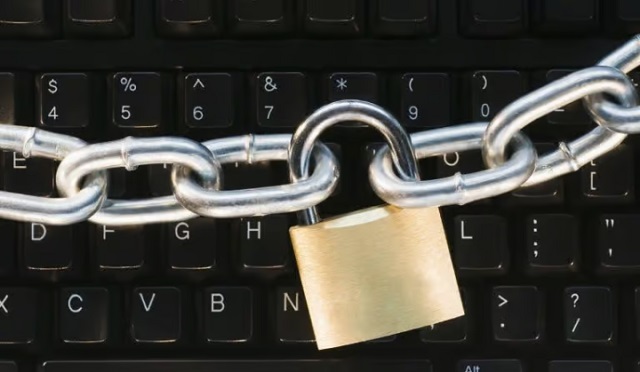
From LifeSiteNews
“The minister could order this dissident’s internet and phone services be cut off and require that decision remain secret”
Free speech advocates have warned that the Liberals’ cybersecurity bill would allow them to block any individual’s internet access by secret order.
During an October 30 Public Safety committee meeting in the House of Commons, Canadian Constitution Foundation (CCF) counsel Josh Dehaas called for Liberals to rewrite Bill C-8, which would allow the government to secretly cut off Canadians access to the internet to mediate “any threat” to the telecommunications system.
“It is dangerous to civil liberties to allow the minister the power to cut off individual Canadians without proper due process and keep that secret,” Dehaas testified.
“Consider for example a protestor who the minister believes ‘may’ engage in a distributed denial of service attack, which is a common form of civil disobedience employed by political activists,” he warned.
“The minister could order this dissident’s internet and phone services be cut off and require that decision remain secret,” Dehaas continued, adding that the legislation does not require the government to obtain a warrant.
In response, Liberal MP Marianne Dandurand claimed that the legislation is aimed to protect the government form cyberattacks, not to limit freedom of speech. However, Dehaas pointed out that the vague phrasing of the legislation allows Liberals to censor Canadians to counter “any threat” to the telecommunications system.
Bill C-8, which is now in its second reading in the House of Commons, was introduced in June by Minister of Public Safety Gary Anandasangaree and contains a provision in which the federal government could stop “any specified person” from accessing the internet.
The federal government under Prime Minister Mark Carney claims that the bill is a way to stop “unprecedented cyber-threats.”
The bill, as written, claims that the government would need the power to cut someone off from the internet, as it could be “necessary to do so to secure the Canadian telecommunications system against any threat, including that of interference, manipulation, disruption, or degradation.”
Many Canadians, including Conservative MPs and freedom groups, have condemned the legislation, along with several other new Liberal bills which aim to censor internet content as well as go after people’s ability to speak their minds.
“Experts and civil society have warned that the legislation would confer ministerial powers that could be used to deliberately or inadvertently compromise the security of encryption standards within telecommunications networks that people, governments, and businesses across Canada rely upon, every day,” the Canadian Civil Liberties Association wrote in a recent press release.
Similarly, Canada’s own intelligence commissioner has warned that the bill, if passed as is, could potentially be unconstitutional, as it would allow for warrantless seizure of a person’s sensitive information.
-

 Agriculture1 day ago
Agriculture1 day agoDanish Cows Collapsing Under Mandatory Methane-Reducing Additive
-
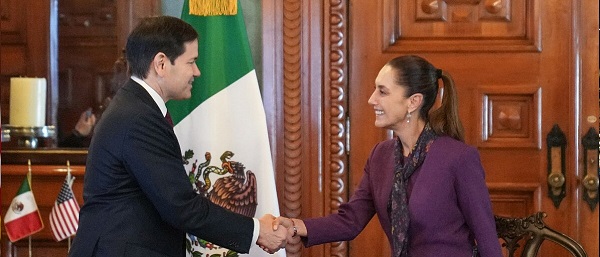
 Daily Caller2 days ago
Daily Caller2 days agoTrump Reportedly Planning Ground Troops, Drone Strikes On Cartels In Mexico
-

 Business2 days ago
Business2 days agoTrump’s Tariffs Have Not Caused Economy To Collapse
-

 Alberta1 day ago
Alberta1 day agoAlberta government’s plan will improve access to MRIs and CT scans
-
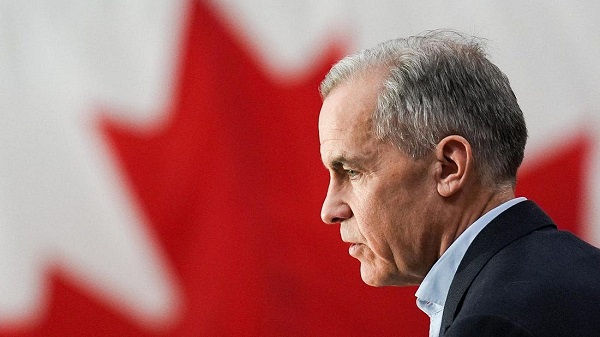
 Business1 day ago
Business1 day agoCarney government’s first budget should signal end to crippling ‘climate’ policies
-

 Brownstone Institute2 days ago
Brownstone Institute2 days agoBizarre Decisions about Nicotine Pouches Lead to the Wrong Products on Shelves
-
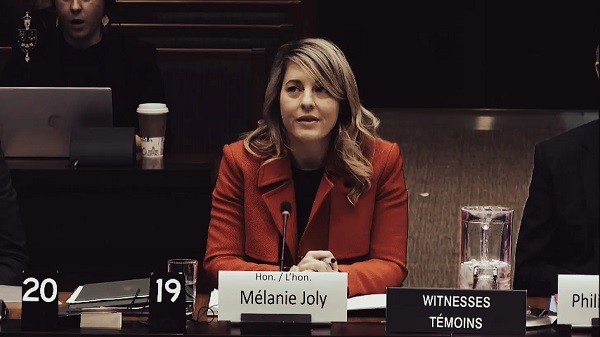
 Business1 day ago
Business1 day agoNo Jobs Clause: Liberals Under Fire Over Stellantis Deal in Fiery Committee Showdown
-

 Censorship Industrial Complex15 hours ago
Censorship Industrial Complex15 hours agoHow the UK and Canada Are Leading the West’s Descent into Digital Authoritarianism




